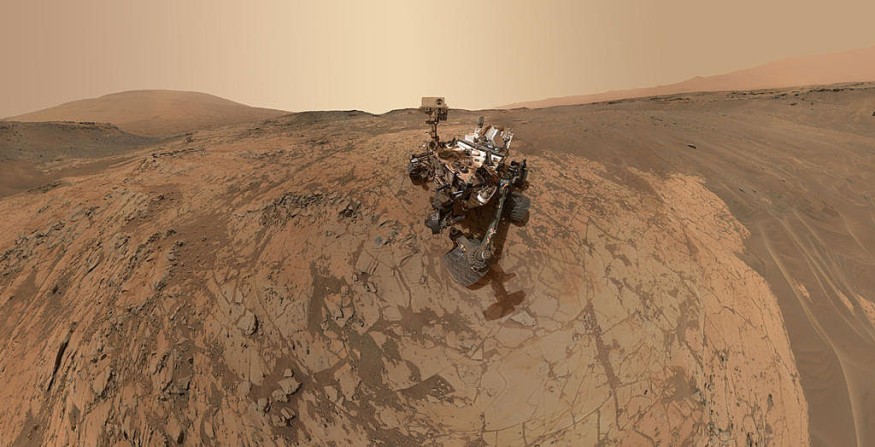The China National Space Administration (CNSA) said that the Tianwen-1 Mars probe has flown more than 400 million km and is on the way to Red Planet's orbit next month.
As of 6:00 a.m Sunday, the probe had traveled in space for more than 160 days and reached around 80 million miles (130 million km) from Earth, Xinhua news agency records. The probe, which is now around five million miles (8.3 million km) from Mars, is working stably, per CNSA. It is expected to slow down in more than a month before entering Mars orbit and planning to land on the Red Planet.

The Mars probe, which had three orbital corrections, has shared an image showing both the Earth and the Moon and taking numerous selfies since its launch on July 23, 2020.
The five-tonne Tianwen-1 probe consists of an orbiter, a lander, and a rover. In one mission, it is planned to complete circling, landing, and roving. It will spend two to three months surveying possible landing sites after entering Mars' orbit, utilizing a high-resolution camera to plan for the May landing.
Lander's Touchdown
According to the CNSA, the seven-to-eight-minute automated landing would be the most complicated aspect of the project. The probe is expected to touch down using its parachute and retrorocket.
After landing, the probe would deploy the rover to perform science surveys around Mars for about three months on Earth. The orbiter ensures contact with the Earth. With a mission life of one Martian year (approximately 687 days on Earth), the orbiter would transmit the rover's communications while doing its own scientific detection.
In October of last year, the CNSA announced that the spacecraft will land on Utopia Planitia, the largest known lava plain on Mars and in the Solar System.
The location may be, according to geologists, the floor of an ancient ocean.
The five-metric-tonne spacecraft consists of an orbiter and a landing capsule and holds a rover onboard.
The most challenging aspect of the task is making a soft landing. It consists of a six-to-eight-minute process that can work autonomously.
About Tanwen-1
China would become the second nation to run a rover on Mars, after the United States, which has sent four rovers, if the project is successful.
The rover's tasks include examining the morphology, geographical structure, soil properties, near-surface distribution of frozen water, the chemistry and climatic environments of the surface and atmospheric ionosphere, and the review of the planet's magnetic fields and inner structure.
China aims to send another, more giant probe to Mars by 2030 to gather samples and return them to Earth. Its eyes also focus on bringing humans in the future to the red planet.
The project's name derives from Chinese poet Qu Yuan's "Tianwen" (Questions to Heaven) poem, which was made around 340 BC to 278 BC.
Check out more news and information on Space on Science Times.
© 2026 ScienceTimes.com All rights reserved. Do not reproduce without permission. The window to the world of Science Times.











